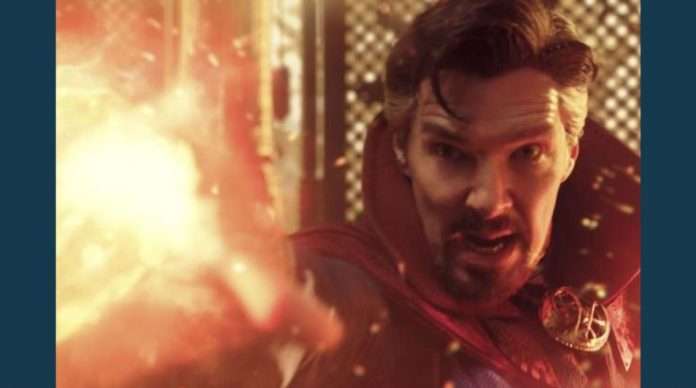
LOS ANGELES, May 3 (UPI/critic Fred Topel) — “Doctor Strange in the Multiverse of Madness,” in theaters Friday, lives up to its promise of driving its hero mad. Most of the fun would constitute spoilers, so this account will be as vague as possible.
Stephen Strange (Benedict Cumberbatch) meets America Chavez (Xochiti Gomez) when he saves her from a cyclops octopus chasing her from other universes. To protect Chavez’s multiverse-crossing powers from falling into the wrong hands, Doctor Strange consults Wanda Maximoff (Elizabeth Olsen).
Protecting Chavez does require a trip through other universes, which build on the trippy metaphysical visuals of the first Doctor Strange. Even fleeting glances at other universes in passing suggest the creative possibilities for worlds that favor art over physics.
But, the true joy of “Multiverse of Madness” is to see director Sam Raimi bring his horror director sensibilities to the Marvel Cinematic Universe. Raimi is humble enough to color within the MCU lines, but “Doctor Strange” provides plenty of situations in which Raimi’s sensibility is suitable.
Raimi’s “Spider-Man” movies include even more of his “Evil Dead” sensibility, but there’s still room in Doctor Strange for his extreme zoom-ins, his distinct camera angles or evil spirit point of view shots.
When magic is involved, Raimi can unleash his devilish humor. The darker the universe, the more Raimi does it his way.
There are even some hints of violent Raimi deaths. He presents them in PG-13 palatable edits, but if you know, you know.
“Multiverse of Madness” escalates the drama in ways that have proven to be a struggle for other movies about characters with unlimited powers. The first act battle would be the climax of another film, but the danger becomes exponential in the multiverse.
The multiverse also allows for more comic book characters to show up. It may be justifiable to include other random characters in a multiverse story, but it also shows those kinds of fan favorite surprises are reaching their limit.
“Spider-Man: No Way Home” was already the ultimate mashup, because once you have three Spider-Men and five villains from different movies, anything else loses steam. The Easter eggs serve their purpose in “Multiverse of Madness,” in fact they’re mostly saddled with exposition, but every Marvel movie can’t rely on adding more surprise characters.
Wanda’s role in the film does depend heavily on her Disney+ series “WandaVision.” It will be interesting to see if Marvel’s cross-platform narrative holds viewers’ interest.
The film does explain what Wanda did if you’ve never watched her show, but there are specific plot points that pay off in “Doctor Strange.” The closest attempt prior was “The X-Files” paying off a season finale in a feature film, but that was still only one series.
“Multiverse of Madness” does follow Strange‘s arc in the MCU. Having made a choice to allow Thanos to snap half the universe away, having messed with Spider-Man’s universe, he’s faced with another poignant dilemma.
If there are, in fact, infinite universes, and you can always look for solutions in another universe, where do you stop? If you never accept your situation, including mistakes you’ve made, what kind of life is that?
Those are big questions for any movie to ask. Fortunately, “Doctor Strange” explores them with beautiful metaphysical ideas and Raimi once again getting away with down and dirty techniques in a studio blockbuster.






